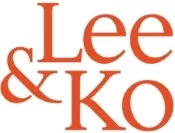1. SAPA Regulations to Apply against Small-sized Businesses
Effective January 27, 2024, the Serious Accident Punishment Act (SAPA) entered into force against small-sized businesses (businesses with 5~49 regular employees) after a 2-year grace period. For the past two (2) years since its enactment in January 2022, the SAPA regulations have been enforced only against corporations with at least 50 or more employees (and construction projects valued over KRW 5 billion), allowing individual proprietors and small-sized businesses (with less than 50 employees) to benefit from the grace period.
Over the past year, legislators explored the possibility of extending the grace period by another two (2) years for small-sized businesses. Efforts to delay the expansion of the scope of the SAPA enforcement, however, have been unsuccessful, and ultimately, the National Assembly failed to pass a bill to extend the SAPA's grace period on February 1, 2024. Consequently, the scope of the SAPA enforcement has expanded as initially scheduled, meaning that small-sized businesses with 5 to 49 employees (as well as construction projects valued less than KRW 5 billion) have now become subject to the SAPA regulations starting January 27, 2024.
2. Compliance Checklist for SAPA Mandates
In the wake of the expanded scope of SAPA enforcement, small-to-medium-sized businesses with less than 50 employees (including individual proprietors) and construction projects valued less than KRW 5 billion are advised to begin the preparation for SAPA compliance – specifically, the establishment and implementation of a SAPA-compliant safety/health management system. To that end, the first key step would be to develop an acute understanding of the SAPA mandates and their implications as well as various aspects of the internal safety/health oversight structure – e.g., the management's leadership, resource allocation (for both personnel and budget), identification of workplace hazard/risk factors, and assessment of the existing safety/health protocol.
Below is a compliance checklist drafted to help small-to-medium-sized businesses assess the status of the existing safety/health governance system and identify area(s) of shortcoming in the context of the SAPA compliance. Please keep in mind that this checklist is intended to serve as a point of reference only, and businesses are advised to design a system that is tailored to the specific characteristics/attributes of each workplace's operation.

To view the full article please click here.
The content of this article is intended to provide a general guide to the subject matter. Specialist advice should be sought about your specific circumstances.
We operate a free-to-view policy, asking only that you register in order to read all of our content. Please login or register to view the rest of this article.






